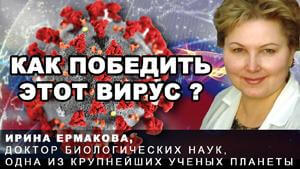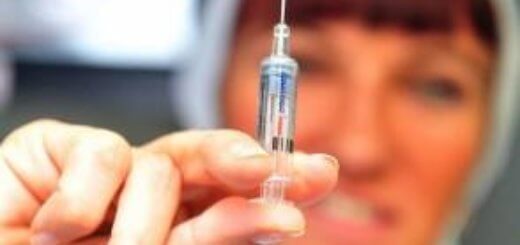
The pandemic may have started with the fact that fish and other animals infected with the artificially created bacterium Cynthia could have entered the market in Wuhan. This is the version of the famous Russian scientist, doctor of biological Sciences Irina Ermakova, who was interviewed by TV journalist Andrey Karaulov.
According to the biologist, the new bacterium Cynthia – “a real monster”, which was created by American biotechnologists under the leadership of Nobel laureate Hamilton Smith to eliminate the consequences of the largest natural disaster. In 2010, a British petroleum platform sank in the Gulf of Mexico, resulting in a huge amount of oil spilling into the ocean.
The task of the bacterium was to remove the formed oil film by absorbing carbon, however, given the presence of the latter in amino acids, which are components of proteins, the microorganism gradually mutated and switched to animals and people. Moreover, it began to multiply spontaneously, and this is when the danger became truly global.
The first patients, who were mostly oil workers or residents of nearby areas, were diagnosed with the same thing as with coronovirus – dry cough and pneumonia, while the mortality rate was very high. For some reason, the military virologists, who must be very intelligent people by their level of mental development, did not think that their offspring could be a threat to all living organisms. When they realized that they had “screwed up” in a big way, these facts were hidden in every possible way, and the media was ordered not to spread on this topic.
HOW TO BEAT CORONOVIRUS
The spread of an artificially created organism on the planet
Meanwhile, Cynthia got into the Gulf stream and began to drift towards Europe – some people began to die a few days after they bathed: in addition, death could occur after eating seafood, and perhaps the sudden death of the famous businesswoman Alla Verber is just such a case.
The scientist claims that to get rid of the consequences of the unfortunate infection, you can try to drink a weak soda solution, because sodium bicarbonate contains carbon, which Cynthia falls for. Irina Vladimirovna shared this idea with the Chinese, and, coincidentally or not, the epidemic there immediately began to decline.
Reference: Irina Ermakova was born in Moscow in 1952. In 1972, she entered the faculty of biology at Lomonosov Moscow state University. In 1978, she became a post-graduate student at the Institute of General and pedagogical psychology. In 1981, she defended her PhD thesis on the topic “Trace processes in the human visual analyzer during arbitrary memorization of point light stimuli”. the work was devoted to the study of arbitrary and involuntary memory when visual stimuli are applied to a person.
In 2001, the Institute of higher nervous activity and neurophysiology of RAS he defended his doctoral thesis “Compensatory-restorative processes after intracerebral transplantation of immature nervous tissue”, in which he described the functional characteristics of brain stem cells and astrocytes in the brain of animals immature nervous tissue. Numerous studies have shown that this type of stem cell is formed in different structures of the animal and human brain, refuting the thesis that”nerve cells do not regenerate”.
In 1989-2005, she conducted joint research with foreign colleagues with short-term visits (up to 3 months) in Czechoslovakia, the United States, Great Britain, and Sweden.
Since 2005, I. V. Ermakova has been experimentally investigating the effect of one of the varieties of genetically modified soy (RR, line 40.3.2) on the health of rats and their offspring.
In 2007-2009, Yermakova managed to attract employees of two institutes of the Russian Academy of Sciences, as well as the Institute of the Russian Academy of medical Sciences (RAMS).
Yermakova made presentations on the problem of genetically modified organisms and the results of her experiments at numerous conferences abroad.
I. V. Ermakova has 215 publications, including 52 on environmental and food security issues, and has participated in 110 international and domestic congresses, congresses and conferences. To date, Ermakova has published 3 books-brochures and 27 articles on the problem of GMOs in domestic and foreign publications.
I. V. Ermakova has been actively involved in public environmental organizations since 1998. From November 2006 to 2009, she was Vice President for health of the National Association for genetic safety.
Yermakova’s experiments met with serious criticism from the scientific community, which serves the interests of corporations that introduce genetically modified products throughout the planet. These results were not published in the scientific press; they were reported only at conferences and in the media.




















